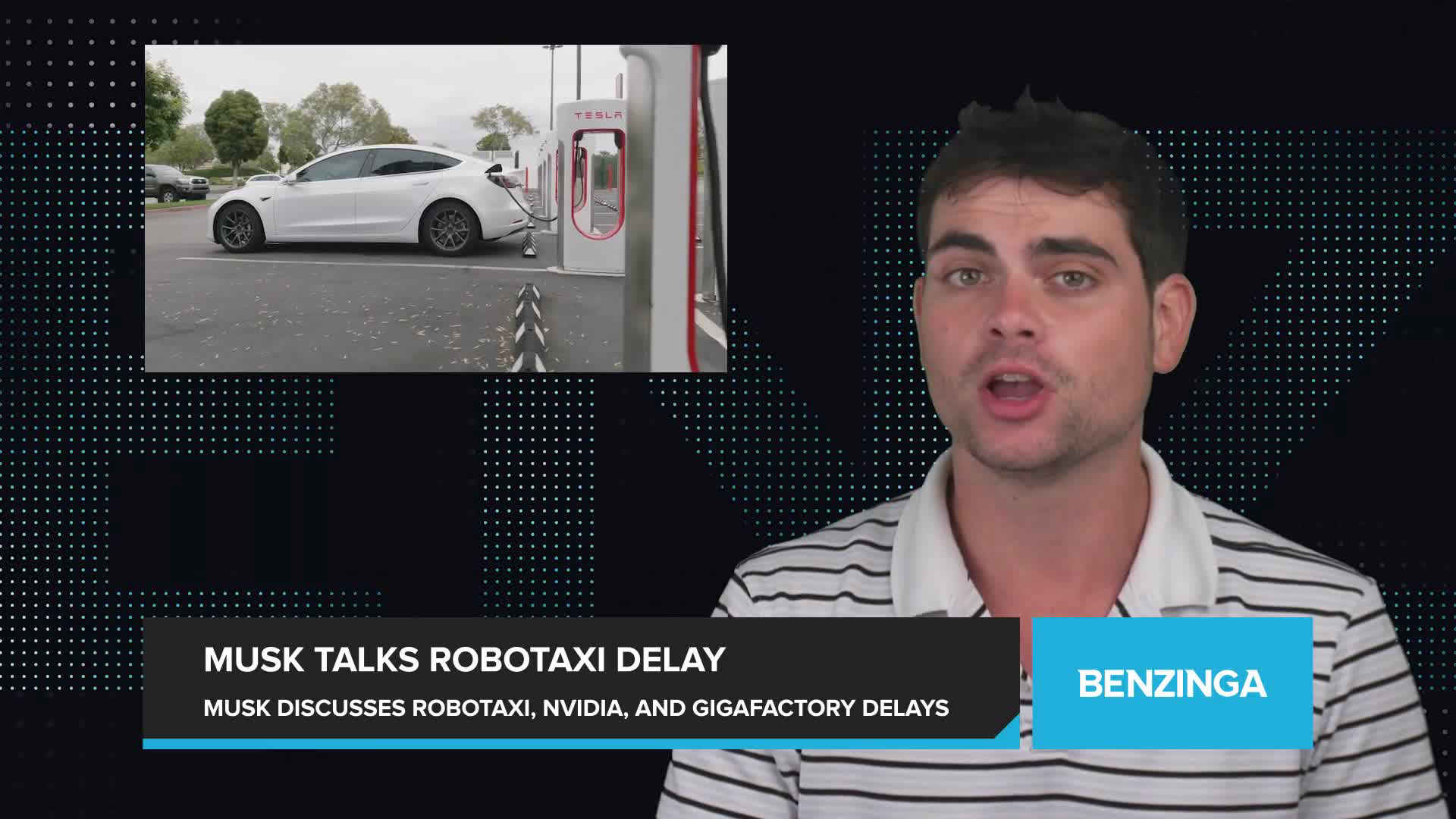The Challenges Facing Elon Musk's Robotaxi Plans

Table of Contents
Technological Hurdles
The core challenge lies in achieving Level 5 autonomy – a self-driving capability that operates without any human intervention under all conditions. This requires breakthroughs in both software and hardware.
Software and AI Limitations
Developing truly autonomous driving software is incredibly complex. Current AI systems struggle with several key areas:
- Edge Cases and Unpredictable Situations: Autonomous vehicles must handle a vast array of unpredictable scenarios, from extreme weather conditions (heavy snow, blinding rain) to unusual road conditions (construction zones, debris in the road), and unexpected actions by other road users (pedestrians suddenly darting into the street, cyclists weaving through traffic).
- Object Recognition and Accurate Perception: Accurately identifying and classifying objects in diverse and challenging environments remains a significant challenge. Poor lighting, adverse weather, and camouflaged objects can all hinder a self-driving car's ability to perceive its surroundings accurately.
- Robustness and Reliability of AI Algorithms: AI algorithms must be robust enough to handle unexpected inputs and errors without crashing or making dangerous decisions. Ensuring the reliability of these algorithms in real-world scenarios is paramount.
- Continuous Learning and Adaptation: AI systems for autonomous driving need to continuously learn and adapt to new situations and improve their performance over time. This requires vast amounts of data and sophisticated machine learning techniques.
Hardware Limitations
The sensor technology used in autonomous vehicles also faces limitations. While cameras, lidar, and radar provide crucial data, there's room for improvement:
- Sensor Fusion and Data Processing: Effectively fusing data from multiple sensors (camera, lidar, radar) to create a complete and accurate picture of the environment is a complex computational task.
- Range and Accuracy of Sensors: Sensors need to reliably operate in various lighting and weather conditions. Improving the range and accuracy of sensors, especially in low-light or adverse weather, is vital.
- Cost-Effectiveness and Scalability: For mass production, sensor technology needs to become significantly more cost-effective without compromising performance or reliability.
Regulatory and Legal Obstacles
Navigating the regulatory landscape is another major hurdle. The introduction of robotaxis requires addressing complex safety regulations and liability concerns.
Safety Regulations and Testing
Governments worldwide are implementing stringent safety regulations and testing procedures for autonomous vehicles:
- Meeting Governmental Safety Standards: Meeting the rigorous safety standards set by different regulatory bodies presents a significant challenge.
- Liability in Accidents: Determining liability in the event of an accident involving a robotaxi is a complex legal issue. Is the manufacturer, software provider, or the owner responsible?
- Regulatory Approvals: The process of obtaining regulatory approvals for autonomous vehicle deployment can be lengthy and complex, involving multiple agencies and extensive testing.
Insurance and Liability Concerns
Insurance for robotaxis presents unique challenges:
- Determining Liability: Establishing clear liability in the case of accidents is crucial, but determining responsibility – whether it's the manufacturer, software provider, or the "owner" – poses legal complexities.
- Cost of Insurance: The cost of insuring autonomous vehicles will impact the business model and potentially make robotaxi services prohibitively expensive.
- Legal Frameworks: Robust legal frameworks are needed to handle accidents involving autonomous vehicles, addressing issues like data acquisition and analysis post-accident.
Economic and Infrastructure Challenges
The economic realities of developing, manufacturing, and deploying robotaxis are substantial. Furthermore, existing infrastructure needs significant improvements.
High Development and Manufacturing Costs
The financial investment required is enormous:
- R&D Costs: Developing advanced AI and sensor technology is extremely expensive, requiring substantial ongoing research and development.
- Manufacturing and Deployment: Mass-producing and deploying a large fleet of robotaxis will necessitate a significant capital investment.
- Return on Investment (ROI): Achieving a positive ROI on such a massive investment remains a significant concern.
Infrastructure Requirements
Widespread robotaxi adoption requires significant infrastructure improvements:
- High-Definition Mapping: Precise, high-definition maps are essential for autonomous navigation.
- Road Infrastructure Improvements: Roads and intersections need to be adapted to optimize autonomous vehicle operation.
- Charging Infrastructure: If electric robotaxis are to be widely adopted, a robust charging infrastructure must be in place.
Public Perception and Acceptance
Public acceptance is crucial for the success of robotaxis. Addressing safety concerns and broader societal implications is paramount.
Safety Concerns and Public Trust
Public apprehension about the safety and reliability of autonomous vehicles needs to be addressed:
- Addressing Accidents and Malfunctions: Openly addressing potential accidents and malfunctions, highlighting safety measures, and providing transparent data on performance is vital.
- Building Public Trust: Building trust requires demonstrating the safety and reliability of robotaxi technology through rigorous testing and transparent communication.
- Public Education Campaigns: Public education campaigns can help alleviate concerns and build confidence in the technology.
Ethical and Social Implications
The broader societal implications of robotaxis are significant:
- Job Displacement: The widespread adoption of robotaxis could lead to job displacement in the transportation industry.
- Urban Planning and Traffic Management: Robotaxis will impact urban planning and traffic management, requiring adjustments to city infrastructure and regulations.
- Data Privacy and Security: Autonomous vehicles collect vast amounts of data, raising concerns about data privacy and security.
Conclusion: Navigating the Path to Robotaxis
Elon Musk's robotaxi vision, while ambitious and potentially transformative, faces numerous challenges. Technological limitations, complex regulatory hurdles, high economic costs, and public perception issues all need to be addressed. Overcoming these obstacles will require continued innovation, collaboration between industry, government, and academia, and a careful consideration of the ethical and societal implications. The future of transportation may depend on successfully addressing these challenges facing Elon Musk's Robotaxi plans. Continued research and development, along with effective regulation, will be crucial in determining the viability and widespread adoption of this transformative technology.

Featured Posts
-
 Pumas Footwear Technology Revolutionizing Hyrox Competition
Apr 25, 2025
Pumas Footwear Technology Revolutionizing Hyrox Competition
Apr 25, 2025 -
 Traffic Alert Semi Truck Involved In Crash On Kilpatrick Turnpike
Apr 25, 2025
Traffic Alert Semi Truck Involved In Crash On Kilpatrick Turnpike
Apr 25, 2025 -
 Analysis The Reintroduction Of The Taiwan International Solidarity Act In The Us Congress
Apr 25, 2025
Analysis The Reintroduction Of The Taiwan International Solidarity Act In The Us Congress
Apr 25, 2025 -
 Detained Palestinian Student Awaits Hearing After Citizenship Interview
Apr 25, 2025
Detained Palestinian Student Awaits Hearing After Citizenship Interview
Apr 25, 2025 -
 Eurovision 2025 Get To Know The Uks Chosen Artists Remember Monday
Apr 25, 2025
Eurovision 2025 Get To Know The Uks Chosen Artists Remember Monday
Apr 25, 2025
Latest Posts
-
 Le Labo Du 8 Une Exposition Photographique De Pierre Terrasson
Apr 26, 2025
Le Labo Du 8 Une Exposition Photographique De Pierre Terrasson
Apr 26, 2025 -
 Milan Design Week 2025 Saint Laurent Showcases The Legacy Of Charlotte Perriand
Apr 26, 2025
Milan Design Week 2025 Saint Laurent Showcases The Legacy Of Charlotte Perriand
Apr 26, 2025 -
 Exposition De Photos De Pierre Terrasson A La Galerie Le Labo Du 8
Apr 26, 2025
Exposition De Photos De Pierre Terrasson A La Galerie Le Labo Du 8
Apr 26, 2025 -
 Saint Laurent And Charlotte Perriand A Milan Design Week 2025 Collaboration
Apr 26, 2025
Saint Laurent And Charlotte Perriand A Milan Design Week 2025 Collaboration
Apr 26, 2025 -
 Dong Duong Hotel Joins Fusion Hotel Collection In Hue
Apr 26, 2025
Dong Duong Hotel Joins Fusion Hotel Collection In Hue
Apr 26, 2025
